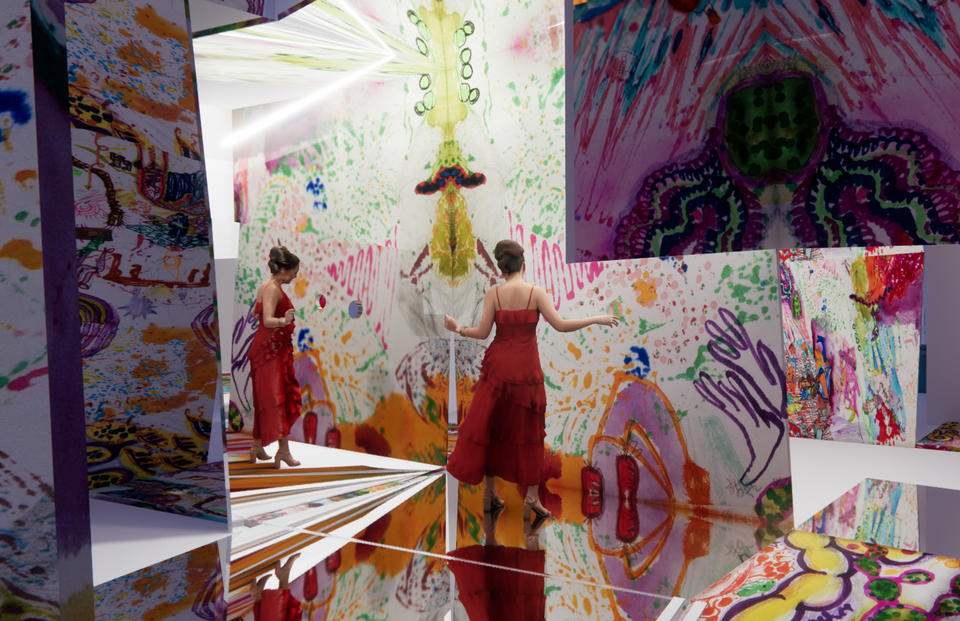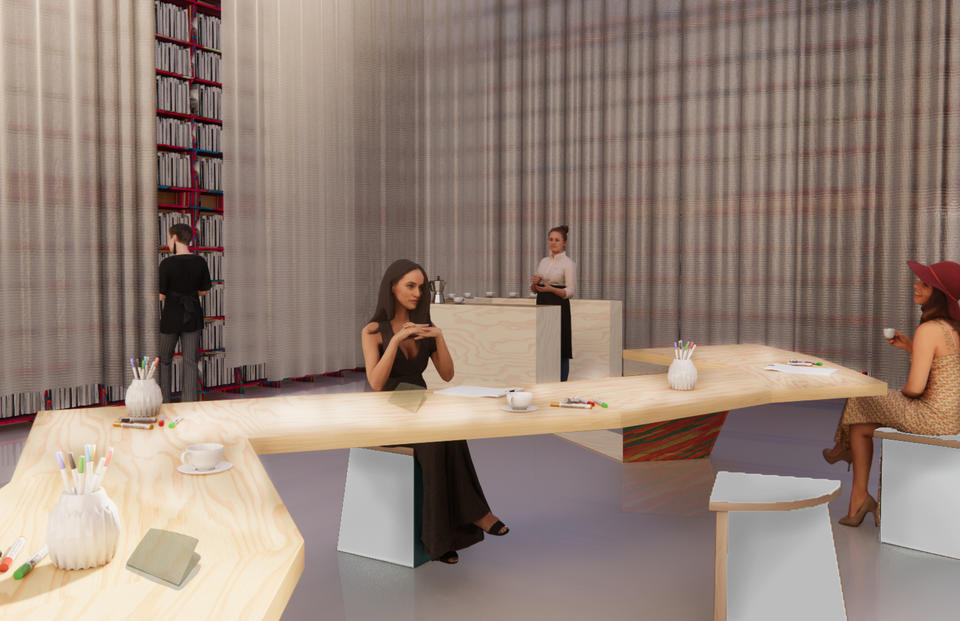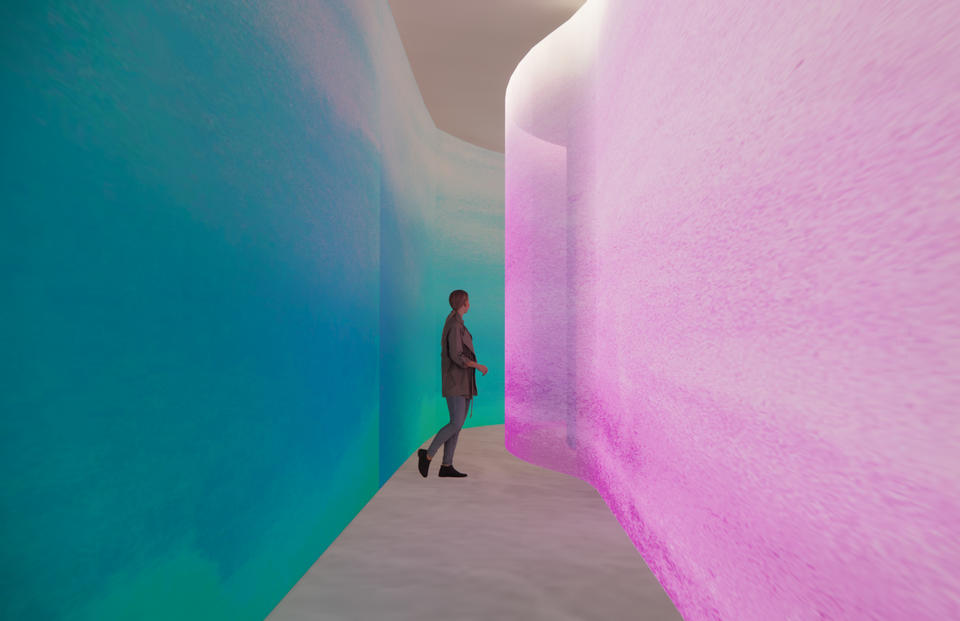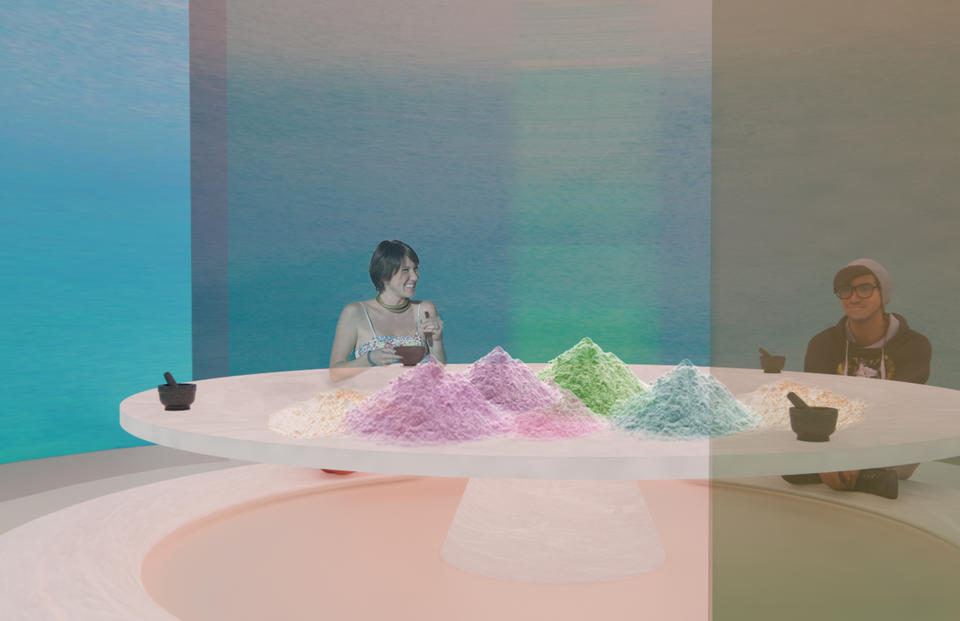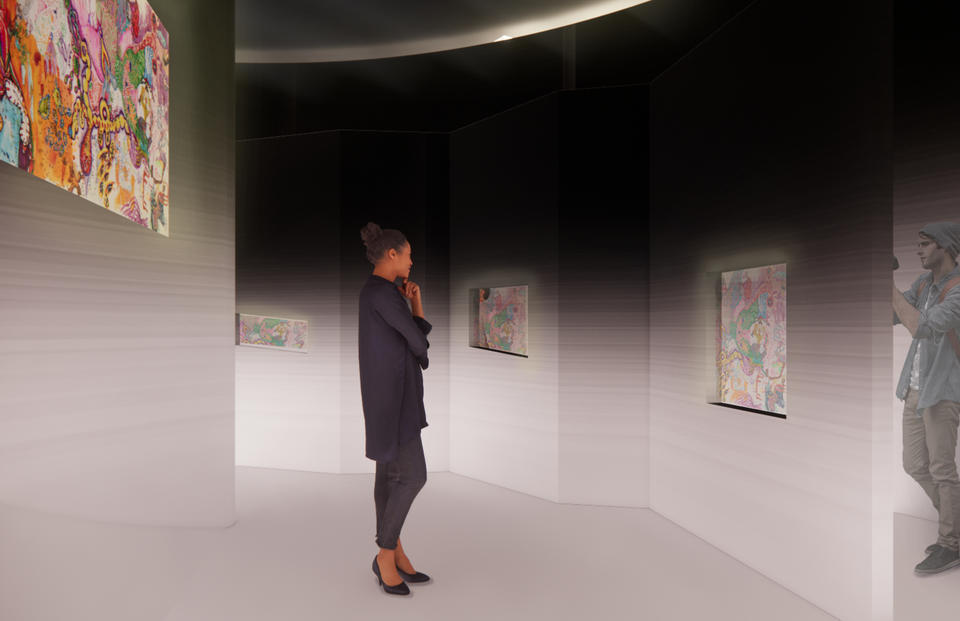Image
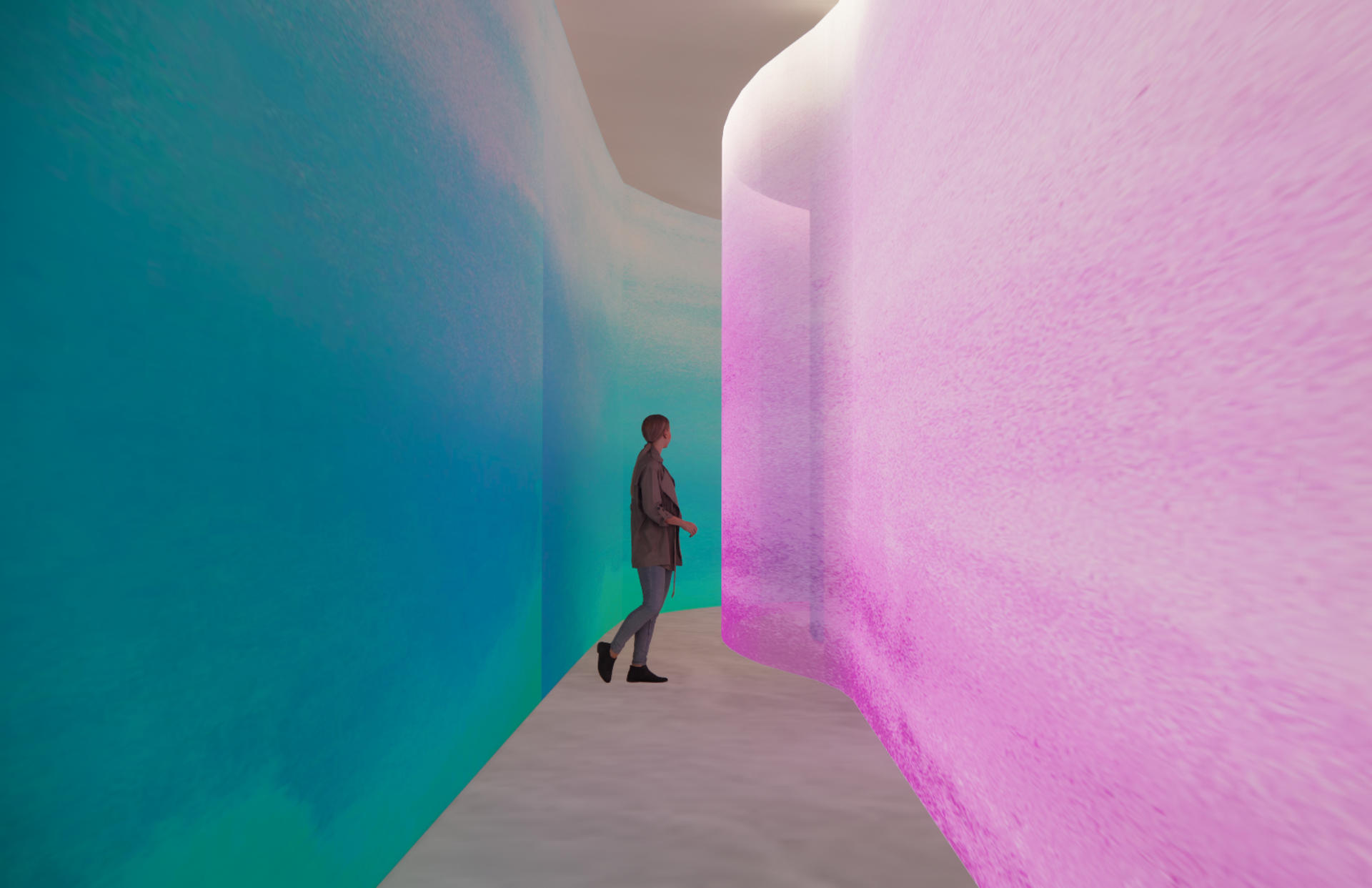
Mooa Seongah Kang
Unfolding Embodied Experience: A Process-driven Immersive Exhibition Design Model
The collections of most museums are comprised of two-dimensional artworks—paintings, drawings, prints, and photography—and are generally presented within a white cube gallery platform. Within this restricted static view, displays rarely consider multisensory engagement and immersion that reveals the accumulated time and effort of creation. Yet for many artists, the process is as important as the finished product.
My impetus for this design initiative began by questioning traditional methods of display. Is it possible to reveal the hidden depth embodied in two-dimensional artworks, allowing audiences to participate with all their senses in the journey of an artist’s experience? In other words, is it possible to make two-dimensional artworks more immersive where the hierarchy between the process and the output is reframed?
Every artist has unique habits of making and for many, the process is neither linear nor even sequential. Assuming an approach based on Wallas’ four-stage model of the creative process, this thesis proposes an exhibition that will allow visitors to experience the artistic process as if they are inside of the artist’s brain and soul, acknowledging the steps Wallas identifies, but not a specific order. Thereby, visitors will become active participants rather than passive observers by navigating four different pavilions comprised of the four keywords: Preparation, Incubation, Illumination, and Verification.
At its core, this thesis proposes a new exhibition design model, called the ‘process-driven immersive exhibition design model’ in connection with Gardener’s Multiple Intelligence Theory. These ideas are directly applicable and adaptable to current art museum practices. I am using my painting as a case study to showcase how this system will be applied to the real world. This system will benefit both art administrators and museum visitors. Specifically, it will be a guideline for artists, exhibition designers, and curators to collaborate and communicate, and thus make for an engaging exhibition and it will encompass a wider range of audiences by facilitating multiple senses, learning styles, and embodied experiences.
Image
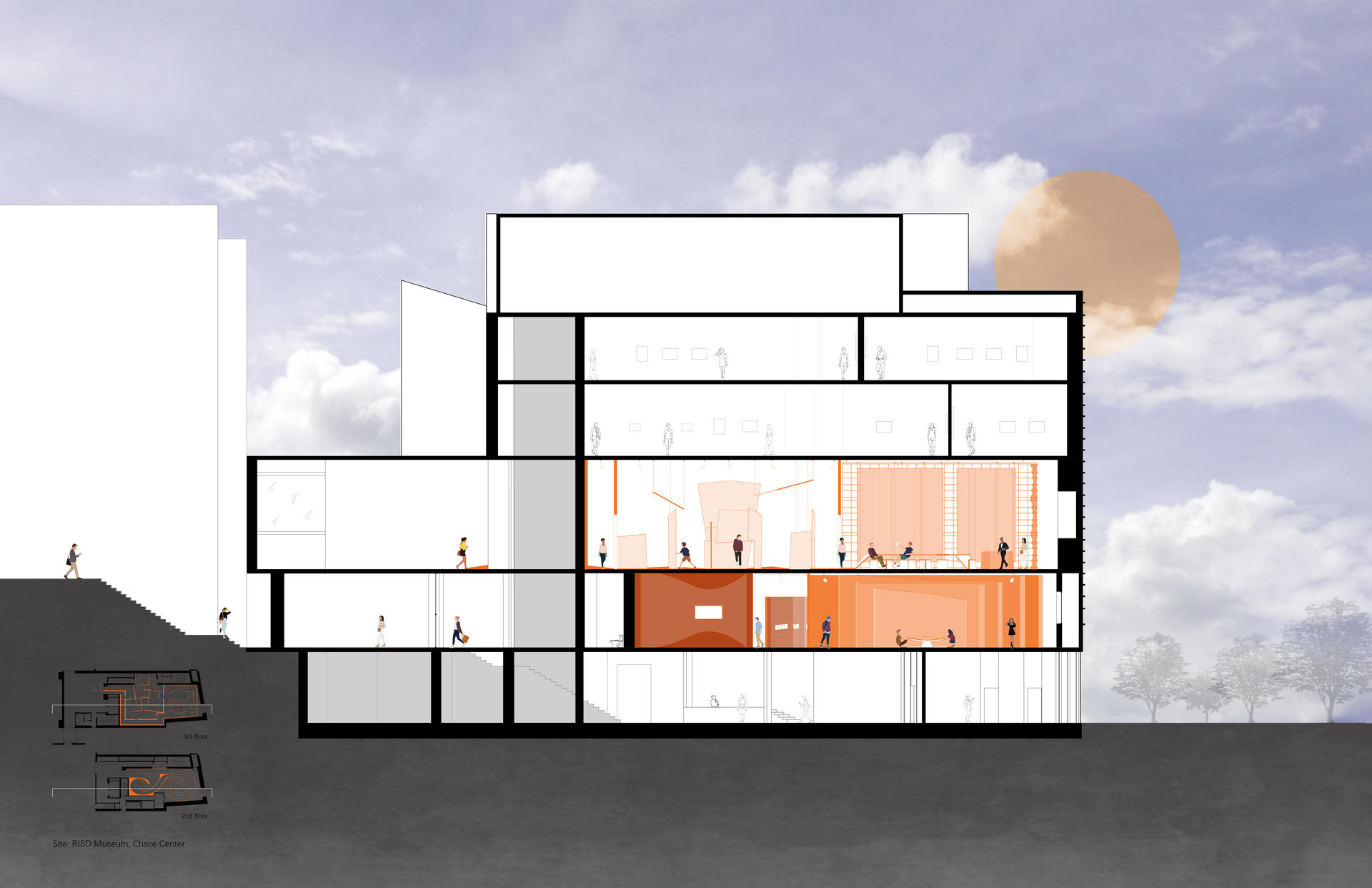
Proposed section and floor plans for the RISD Museum, Chace Center
2022
Is it possible to make an entire exhibition based on a single original piece? This paper demonstrates how a single original painting can be variated and translated into a spatial concept based on the artistic process. I am using my painting as a case study to showcase how this model will be applied to the real world.
Image
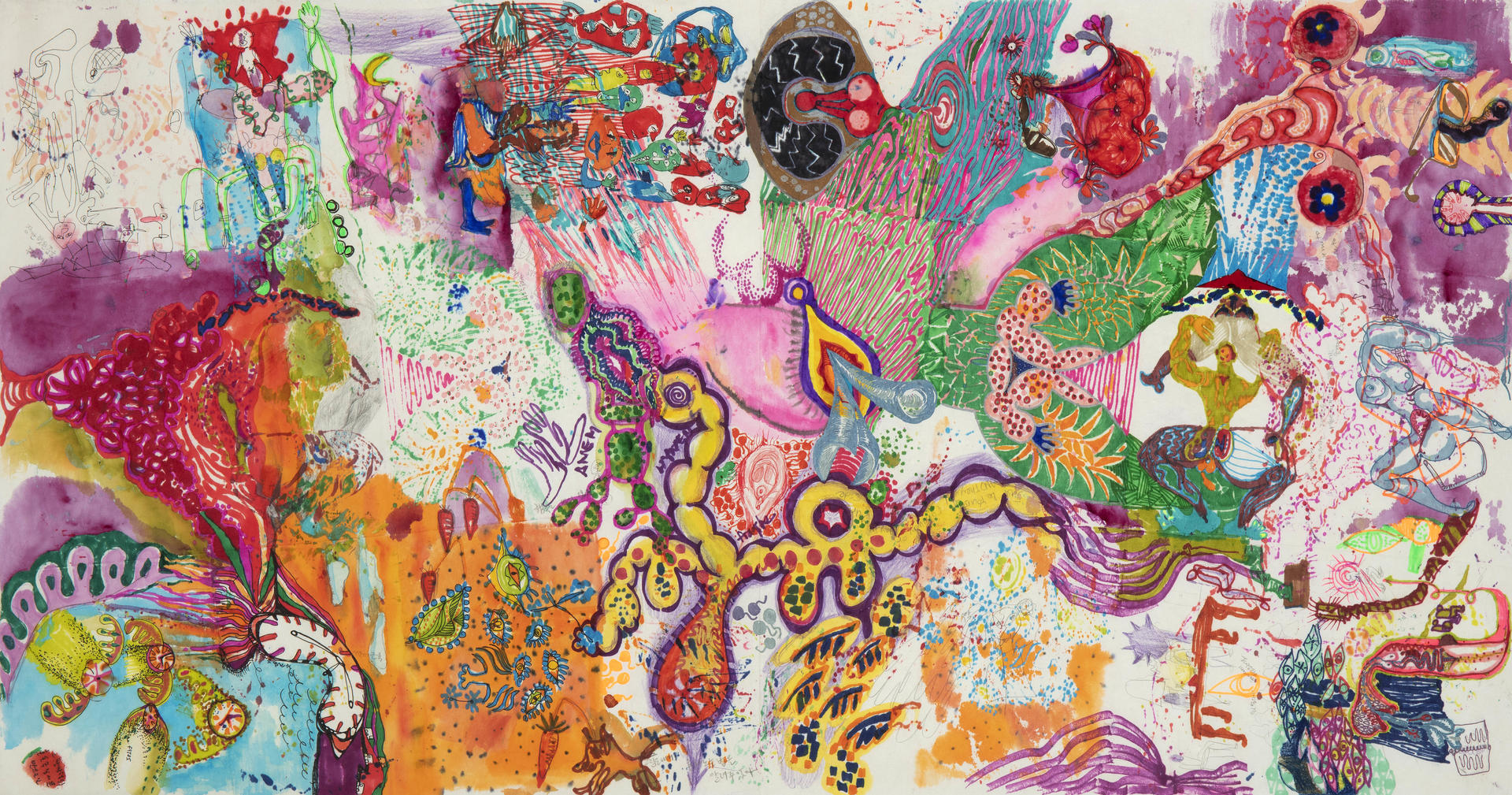
Noisy and Precarious
Korean powder pigment on Hanji paper
143 x 75 cm
2019
My work explores revealing and concealing the stories of the female body through folding and unfolding Hanji paper. My motivation for paintings stems from the conflict between the sensitivity that I experienced when people gazed upon my body and the inner desire to express my pure body free from sociocultural norms. Female sensuality, personal memories, and physical experiences that happen in the female body are layered upon each grid of folded paper and serve as a visual diary and portable studio while carrying in daily life. ‘Folding and unfolding’ is a wonderful tool to express personal presence while camouflaging and distracting people’s eyes with fragmented stories which can be adaptable to social gaze and norms. I reconstruct and re-edit partially drawn sketches by randomly connecting the narratives based on the characteristic of double-sidedness and the accidental mark of Hanji paper. Through applying Korean traditional pigment, I create vibrational energy that feels alive through vivid color and form. My artistic process resulted in a single organic form, where multiple topics about the body tangled and mixed in the process of collecting and connecting the fragmented stories about the female body.
Image
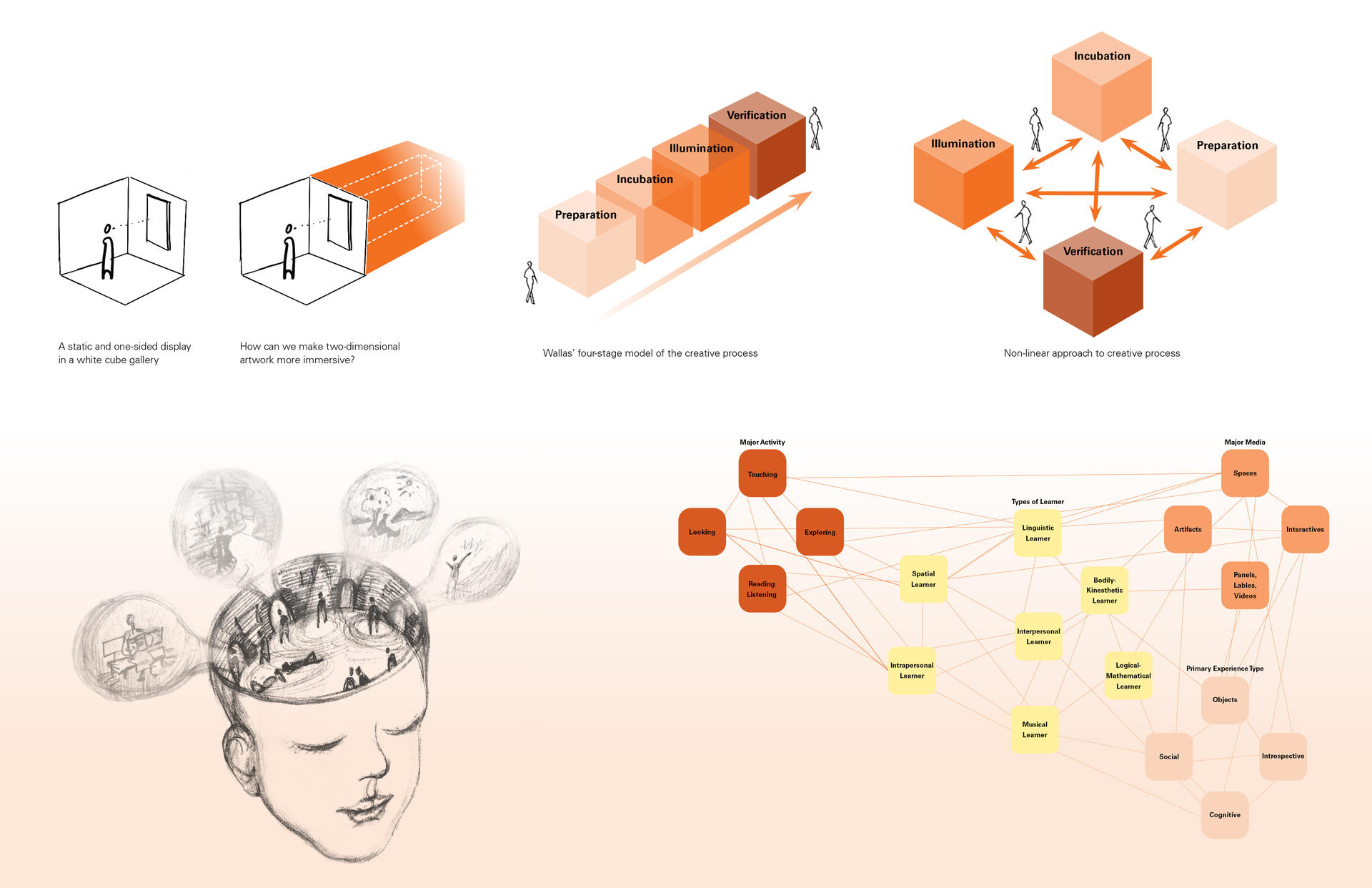
Design Strategy: Process-driven immersive exhibition design model
2022
How can we make two-dimensional artwork more immersive? I believe immersive experience can occur when you digest the artist’s journey of the creative process. I propose a ‘process-driven immersive exhibition design model’ as a design strategy that reveals the layers behind the process of creation and puts multiple types of learners into intimate and multisensory moments. The more you mobilize multiple senses and engage in the artist’s process, the easier it is to enter the state of immersion. In order to achieve a process-driven exhibition design, we need to take it consideration three points. Firstly, analyze the creative process of an artist and extract keywords from the artist interview. Secondly, combine and connect the keywords of the creative process with the visitor’s participation. Thirdly, design for all the senses and multiple learning styles.
Image
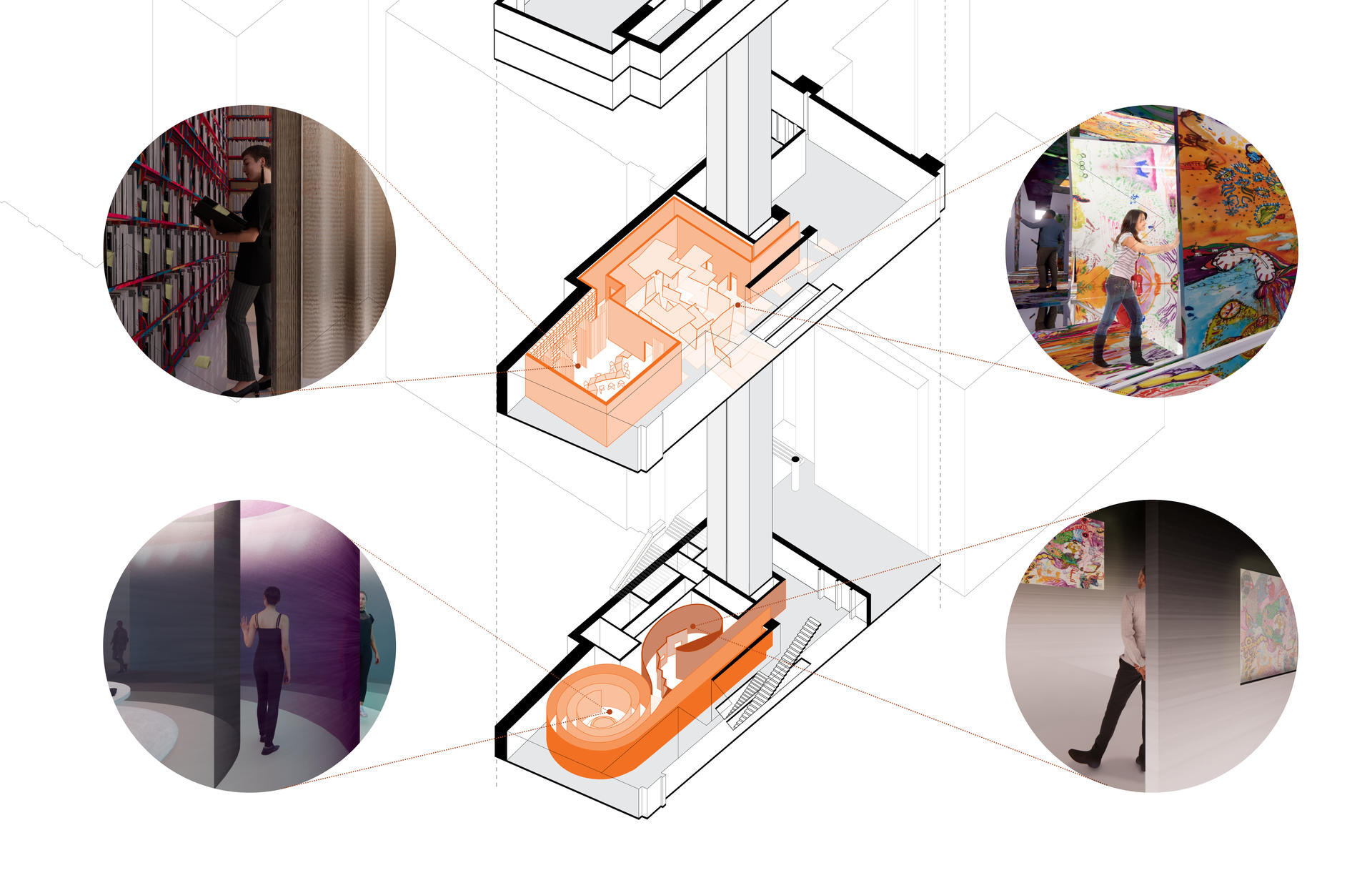
Exploded axonometric diagram
2022
Every artist has unique habits of making and, for some, the artistic process is neither linear nor sequential. Visitors will become active participants rather than passive observers by navigating in a nonlinear circulation through four different pavilions. These pavilions highlight four keywords of the creative process: Preparation, Incubation, Illumination, and Verification.
Image
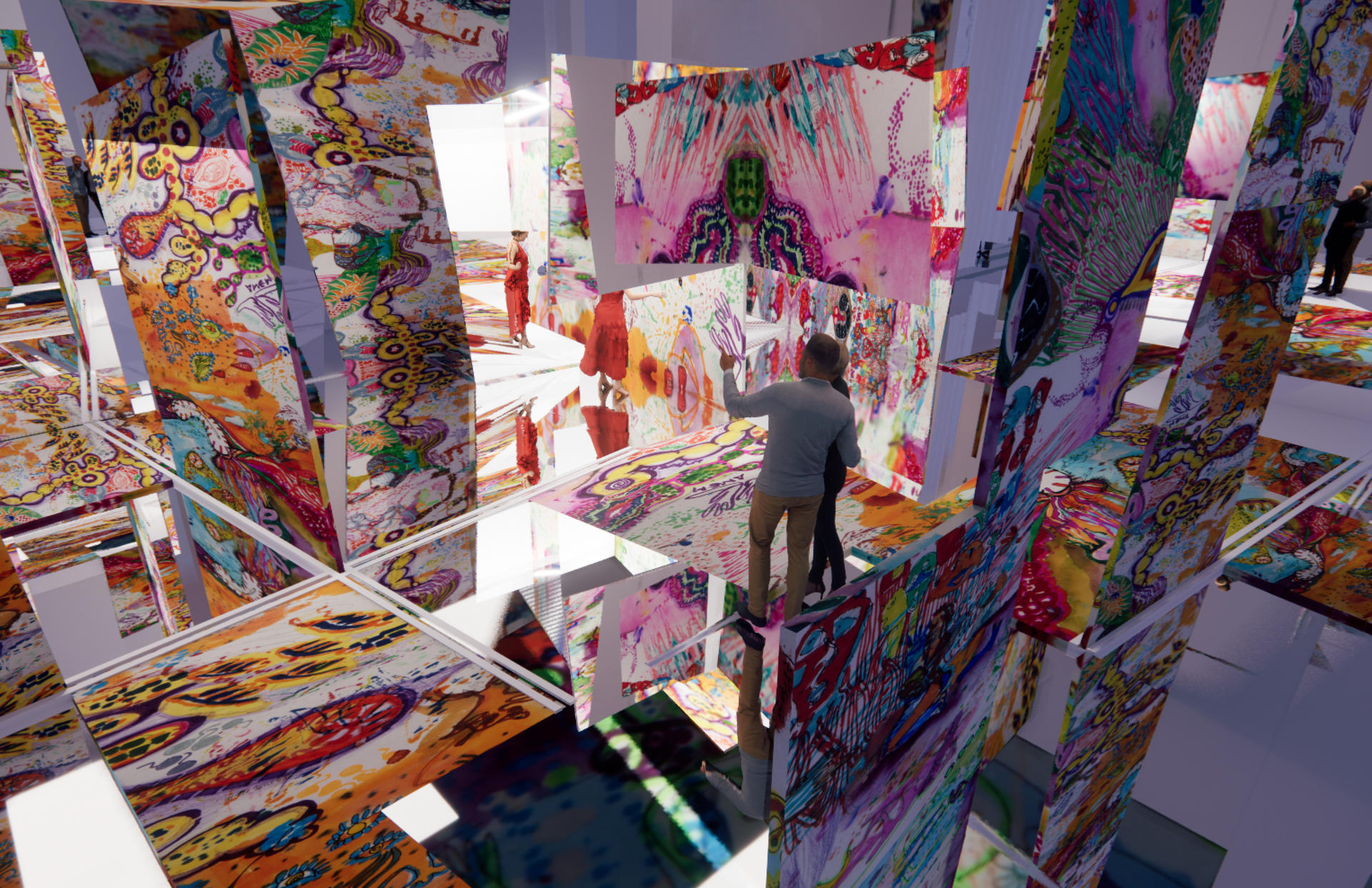
Preparation: The fragmented body
2022
The artist’s motivation for the painting stems from the conflict between the sensitivity that she experienced when people gazed upon her body and the inner desire to express her pure body free from sociocultural norms. This space aims to show the fragmented and distractive aspects of Mooa’s painting by creating an enveloping environment.
- Architecture
- Ceramics
- Design Engineering
- Digital + Media
- Furniture Design
- Global Arts and Cultures
- Glass
- Graphic Design
- Industrial Design
- Interior Architecture
- Jewelry + Metalsmithing
- Landscape Architecture
- Nature-Culture-Sustainability Studies
- Painting
- Photography
- Printmaking
- Sculpture
- TLAD
- Textiles
